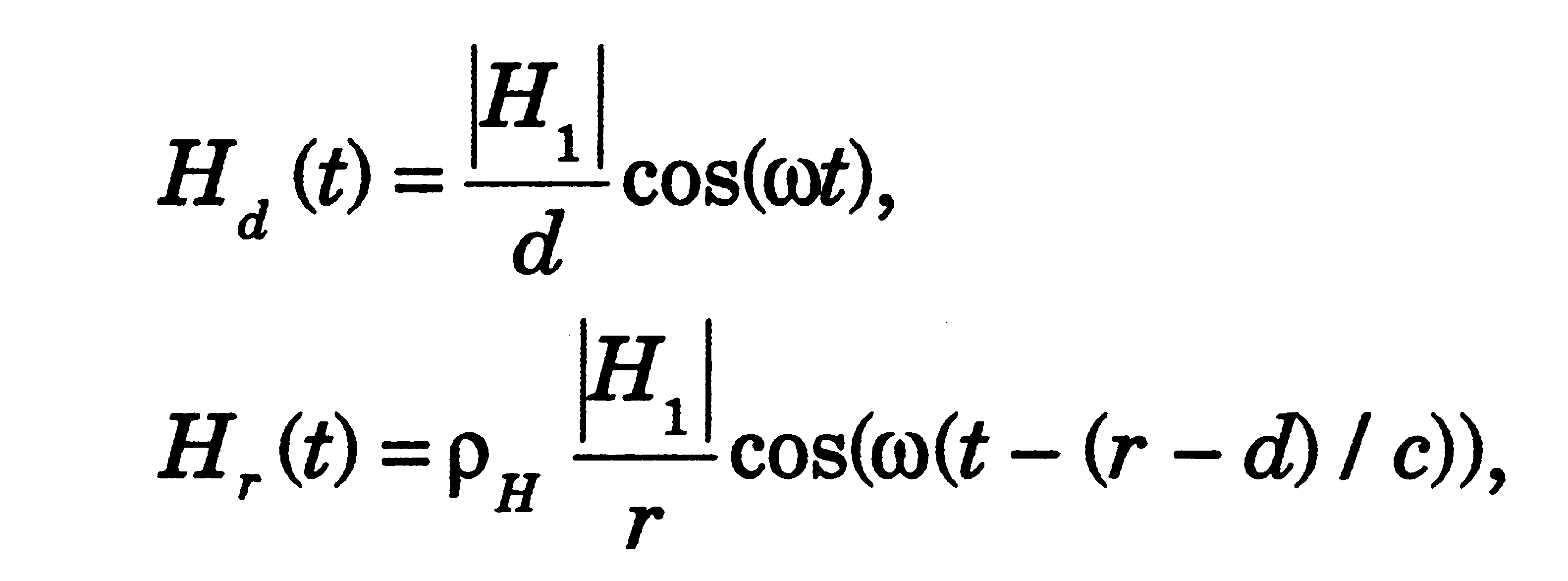
by Zhong Chen and Tim Harrington
ANSI C63.4 NSA is based on the derivation in [2], where the EDmax concept was introduced. EDmax is the maximum electric field in dBmV/m over the height scan of a half-wave dipole receive antenna from 1 pW of transmitted power. The subsequent NSA derivation is based on a point dipole with a sinusoidal pattern in the plane containing the dipole, and an isotropic pattern in the perpendicular plane. In fact, when a sinusoid radiation pattern is included in the vertical polarization equation of [1], the original C63.4 NSA equation is obtained.
In [1], the vertical polarization direct and reflected magnetic fields are

With the point dipole vertical radiation pattern, these become

where the notation of [2] is used with the directivity pattern of an electrically short dipole, and , account for the angular dependence of the non-isotropic pattern. By simple trigonometry, sin(q1) = h/d, and sin(q2) = h/r. Thus,
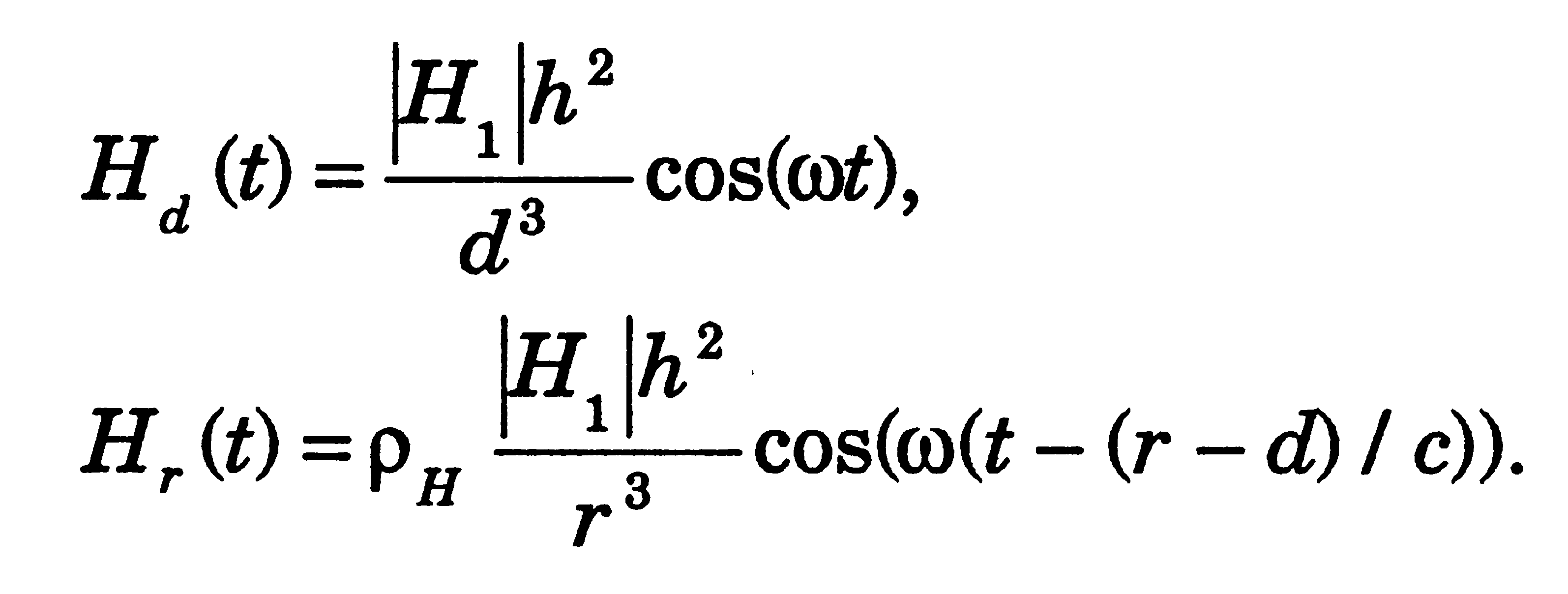
The total H field at the observation point is then given by

The magnitude of Hobs(t) is given by

Using rH=1 for H-field reflection coefficient, the power density attenuation from source to receiving antenna is
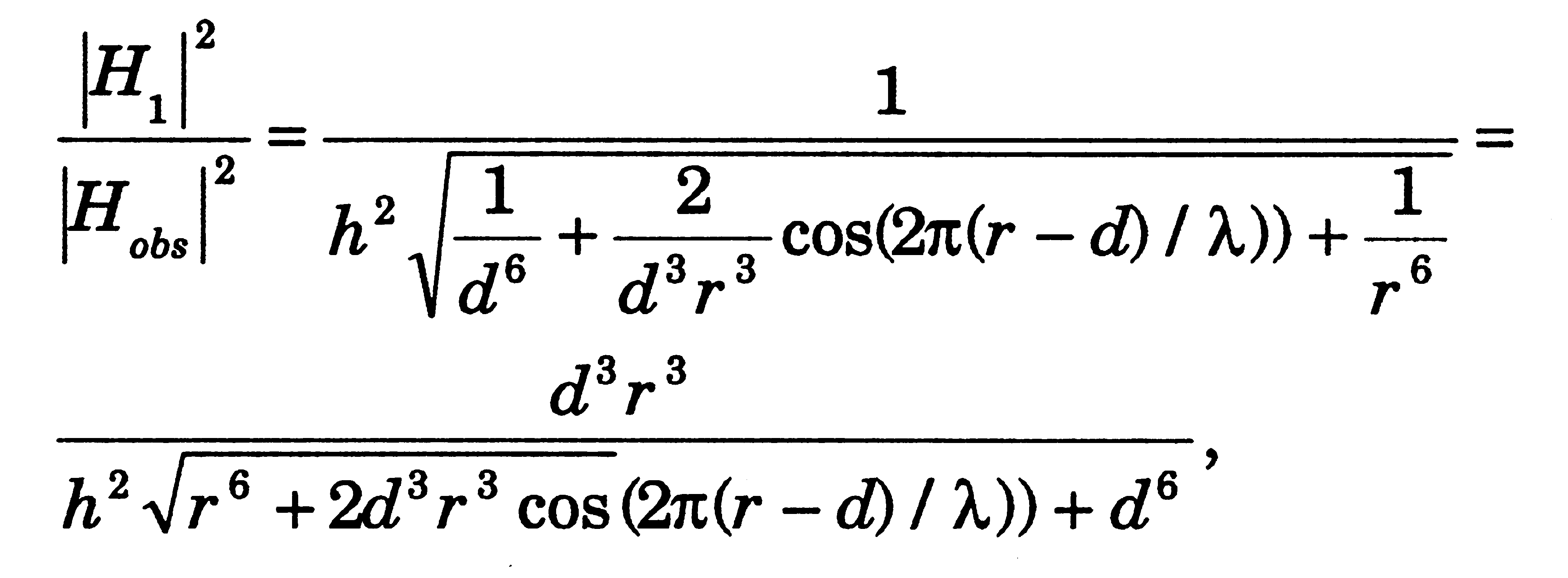
and multiplying by 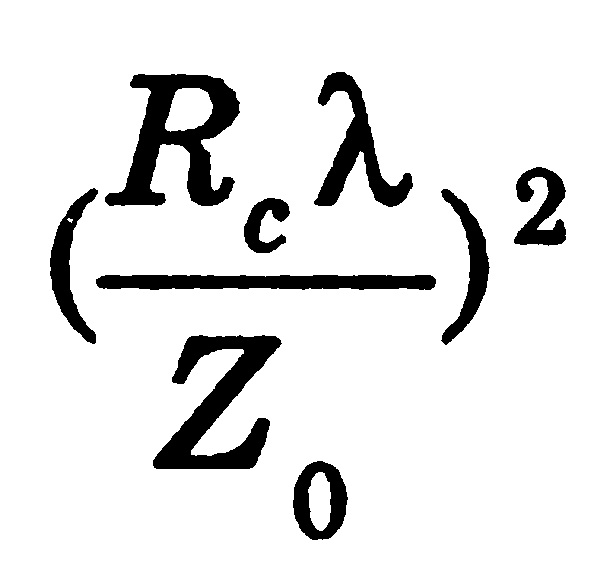 yields the NSA. This agrees with the results
of ANSI C63.4.
yields the NSA. This agrees with the results
of ANSI C63.4.
An additional question is which is more accurate for simulating a real measurement situation with a typical EMC antenna: the point dipole or an isotropic source radiation pattern? For most EMC antennas, such as biconical or log-periodic dipole array antennas, [2] shows relatively good agreement between theory and measurements using the dipole pattern. It is clear that a vertical dipole pattern approximates the pattern of a low gain antenna better than does an isotropic source. Thus the results in C63.4 are likely to have smaller errors. However, this does not mean the NSA formulation in [2] and C63.4 does not contain errors. In fact, Figure 1 (from [3]) shows that a typical biconical (dimension defined by MIL-STD-461-1964) radiation pattern can deviate from a dipole pattern significantly when the biconical antenna becomes electrically large.
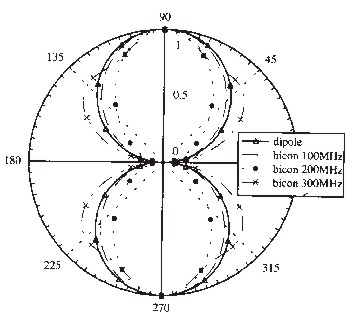
Figure 1. Numerically modeled (MoM) radiation pattern of a
biconical antenna compared with a point dipole pattern.
The C63.4 NSA formulation is a very simplified theoretical approach. In addition to the radiation pattern errors, the presence of a ground plane strongly affects antenna performance [3]. Although [2] and C63.4 include considerations of mutual coupling between transmit and receive antennas (and their images) for half-wave tuned dipoles, corrections for broadband antennas are not included but are needed.
[1] W. S. Bennett, “Normalized site attenuation and test site validation,” IEEE EMC Society Newsletter, no. 178, pp. 10-12, Summer 1998.
[2] A. A. Smith, R. F. German, and J. B. Pate, “Calculation of site attenuation from antenna factors,” IEEE Trans. Electromag. Compat., vol. EMC-24, no. 3, pp. 301-316, Aug. 1982.
[3] Z. Chen, and M. Foegelle, “A numerical investigation of ground plane effects on biconical antenna factor,” IEEE Intl. Symp. EMC, Denver, CO, 1998.
Zhong Chen and Tim Harrington are both with EMC Test Systems in Austin, Texas. They can be reached at (800) 253-3761 or via e-mail at zhong.chen@emctest.com or tim.harrington@emctest.com.